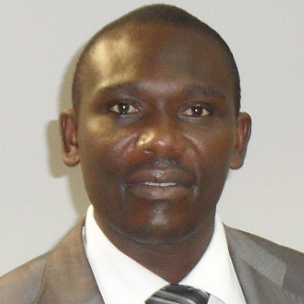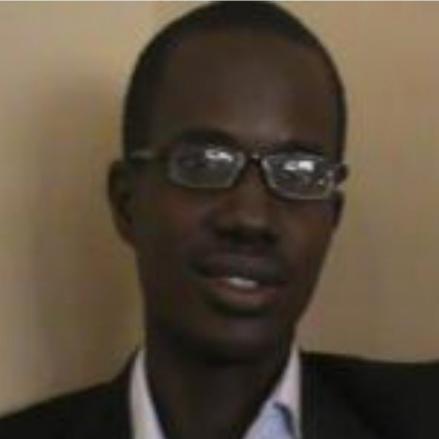International Journal of Information Engineering and Electronic Business (IJIEEB)
IJIEEB Vol. 12, No. 4, 8 Aug. 2020
Cover page and Table of Contents: PDF (size: 463KB)
Development and Evaluation of Mobile Telenursing System for Drug Administration
Full Text (PDF, 463KB), PP.40-52
Views: 0 Downloads: 0
Author(s)
Index Terms
Drug usage Adherence, Mobile Health, Mobile Telenursing, Remote Prescription.
Abstract
Mobile telenursing is an emerging sub-field of mobile health that proposes remote nursing care provision with the aim of reducing stress on nurses by enabling them to spend more time on direct patient care rather than indirect care. Most existing mobile telenursing systems are limited to a simple phone call and Short Message Service (SMS) alert thereby rendering them inadequate to support indirect patient cares such as remote prescription based on consultant’s advice and monitoring of drug usage adherence. Hence, this research developed a Mobile Telenursing and Drug Administration System (MTS) characterized by support for the aforementioned indirect patient cares. Domain-Driven Design was employed in designing MTS client-server architecture and its framework. The framework was implemented by developing an SMS reminder system and client mobile application which maintains real-time communication with the webserver. The MTS, which supports real-time consultation between nurse-patient and nurse-consultant, was developed for mobile devices running the Android operating system using the framework implemented. The MTS was programmed using JavaScript and Pusher real-time messaging library of the Android development Kits. The performance of the MTS was evaluated through users’ assessment by administering a set of questionnaire on purposively selected 64 nurses; 53 patients chosen from four (4) purposively selected hospitals (General Hospital, New Bussa; Bowen University Teaching Hospital, Ogbomoso; Alimosho General Hospital, Lagos and Ifako-Ijaiye General Hospital, Lagos). The responses obtained from the questionnaires were statistically evaluated to determine MTS suitability for drug usage monitoring, remote prescription, palliative care, injection administration, patients’ clean-up and follow-up treatment using a correlation test. Also, mean effectiveness and mean acceptability of MTS were evaluated using a t-test at 0.05 level of significance. The MTS was deployed on mobile devices running the Android operating system. The results of performance evaluation revealed that MTS recorded suitability values of drug usage monitoring (r = 0.656), remote prescription (r = 0.829), palliative care (r = 0.925), injection administration (r = -0.772), patients’ clean-up (r = -0.841) and follow-up treatment (r = 0.868) of patients at (p < 0.05). Similarly, MTS recorded mean effectiveness and acceptability values of 3.596 and 3.32, 3.770 and 3.36 at (p < 0.05) for nurses and patients, respectively. The research developed MTS which is suitable for the provisioning of remote nursing care and drug administration without breaking basic medical ethics. The system can be adopted for mobile telenursing and drug administration system.
Cite This Paper
Emuoyibofarhe O. Justice, Adigun J. Olusegun, Emuoyiborfarhe N. Ozichi, "Development and Evaluation of Mobile Telenursing System for Drug Administration", International Journal of Information Engineering and Electronic Business(IJIEEB), Vol.12, No.4, pp. 40-52, 2020. DOI:10.5815/ijieeb.2020.04.05
Reference
[1]J. O. Adigun, J. O. Onihunwa, D. A. Joshua, & O. O. Adesina, Framework for development of mobile telenursing system for developing countries. 13th International Conference of the Nigeria Computer Society (pp. 41-54). Lagos, Nigeria: Nigeria Computer Society (NCS), 2017
[2]S. Bauer, R. Percevic, R., H., and Kordy. The use of short message service (SMS) in the aftercare treatment for patients with Bulimia Nervosa. 2009, www.medetel.lu/download/2009/parallel_sessions/abstract/0422/ the_use_of_ short_message_service.doc
[3]Gustafsson-Wright Emily and Schellekens Onno. Achieving Universal Health Coverage in Nigeria: one state at a time a public-private partnership community-based health insurance model. Brooke Shearer Working Paper series. Global Economy and Development at the Brookings Institution. 2018, www..brookings.edu/research/2016/06.
[4]Edel, Elizabeth M. "Handbook of Informatics for Nurses & Healthcare Professionals." Aorn Journal 90, no. 1 (2009): 139-140.
[5]M. Jordanova, M. "m-Health, mHealth, or Mobile Health–which one is correct? Mobile eHealth solutions for Developing Countries." International Telecommunication Union (2009): 1-4.
[6]Purc-Stevenson R. J., Telenursing: A Review of Recent Trends, Emerging Issues, and Evolving Practices. Mary Ann Liebert, Journal of telemedicine and e-health publications. 2013; 1(2):6-11,2013
[7]Ramelet Anne-Sylvie, Fonjallaz B., Rapin J., Gueniat C. and Hofer M. Impact of a Telenursing service on satisfaction and health outcomes of children with inflammatory rheumatic diseases and their families: a crossover randomized trial study protocol. 2014
[8]Schlachta-Fairchild L., Elfrink V. and Delchman A. Patient safety, Telenursing and telehealth – Patient safety and quality – NCBI bookshelf 2009 www.ncbi.nim.nih.gov/books/NBK2687
[9]Schwaab B, Katalinic A, Riedel J and Sheikhzadeh A. Pre-hospital diagnosis of myocardial ischemia by telecardiology: Safety and efficacy of a 12-lead electrocardiogram, recorded and transmitted by the patient. Journal of Telemed Telecare 2005;11(1):41-4.
[10]Villani A, Malfatto G, Compare A, Della R. F., and Rella V. Clinical and Psycological Telemonitoring and Telecare of High Risk Patients with Chronic Heart Failure through Wireless Technologies: The Icaros Project. Journal of Clin Exp Cardiolog 4: 260. doi:10.4172/2155-9880.1000260, 2013G. Eason, B. Noble, and I. N. Sneddon, “On certain integrals of Lipschitz-Hankel type involving products of Bessel functions,” Phil. Trans. Roy. Soc. London, vol. A247, pp. 529–551, April 1955.


